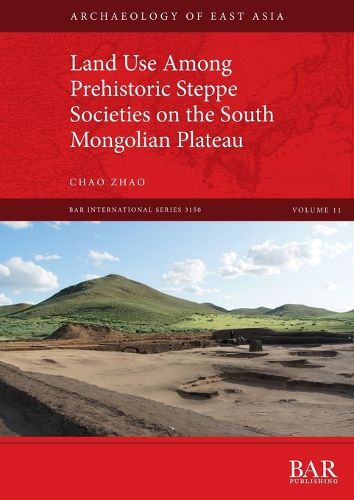Readings Newsletter
Become a Readings Member to make your shopping experience even easier.
Sign in or sign up for free!
You’re not far away from qualifying for FREE standard shipping within Australia
You’ve qualified for FREE standard shipping within Australia
The cart is loading…






This title is printed to order. This book may have been self-published. If so, we cannot guarantee the quality of the content. In the main most books will have gone through the editing process however some may not. We therefore suggest that you be aware of this before ordering this book. If in doubt check either the author or publisher’s details as we are unable to accept any returns unless they are faulty. Please contact us if you have any questions.
This book uses a cultural ecological approach to explore how prehistoric societies were economically and socially organized to utilize the steppe environment in the southern Mongolian Plateau before the emergence of specialized herding economies in the early and middle Holocene. The research is based on a combination of excavation and survey data from the Ulanqab region of Inner Mongolia. The dynamic land use strategies were examined through the lens of subsistence, mobility, and social integration, based on lithic assemblages, settlement patterns, and other material expressions. The results indicate that although the specifics of subsistence practices changed from the Early Neolithic to the Mid-Late Neolithic/Early Bronze age, people made intensive use of the landscape, adopted semi-sedentary lifeways, and combined hunting-gathering with small-scale farming. It reveals a divergent trajectory of cultural adaptation when compared with the core Monsoon-affected zones of northern China during this time period.
$9.00 standard shipping within Australia
FREE standard shipping within Australia for orders over $100.00
Express & International shipping calculated at checkout
This title is printed to order. This book may have been self-published. If so, we cannot guarantee the quality of the content. In the main most books will have gone through the editing process however some may not. We therefore suggest that you be aware of this before ordering this book. If in doubt check either the author or publisher’s details as we are unable to accept any returns unless they are faulty. Please contact us if you have any questions.
This book uses a cultural ecological approach to explore how prehistoric societies were economically and socially organized to utilize the steppe environment in the southern Mongolian Plateau before the emergence of specialized herding economies in the early and middle Holocene. The research is based on a combination of excavation and survey data from the Ulanqab region of Inner Mongolia. The dynamic land use strategies were examined through the lens of subsistence, mobility, and social integration, based on lithic assemblages, settlement patterns, and other material expressions. The results indicate that although the specifics of subsistence practices changed from the Early Neolithic to the Mid-Late Neolithic/Early Bronze age, people made intensive use of the landscape, adopted semi-sedentary lifeways, and combined hunting-gathering with small-scale farming. It reveals a divergent trajectory of cultural adaptation when compared with the core Monsoon-affected zones of northern China during this time period.